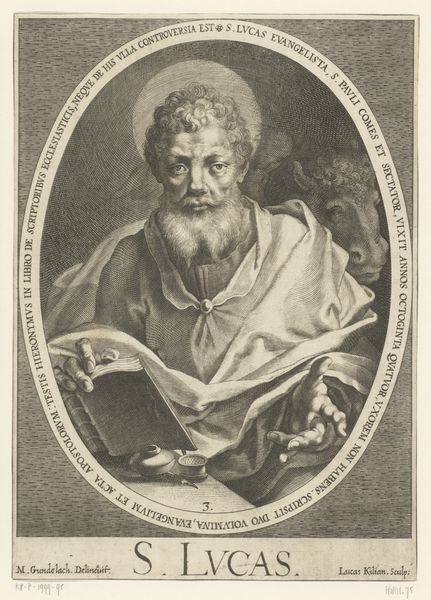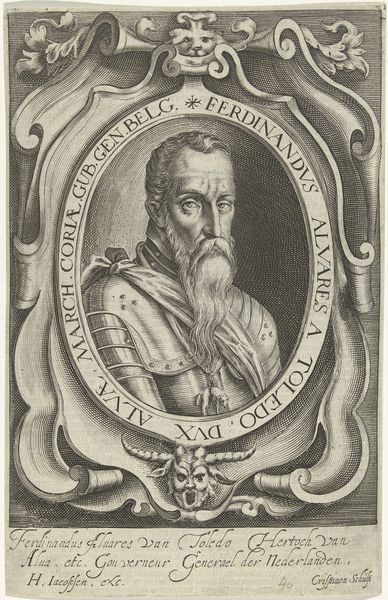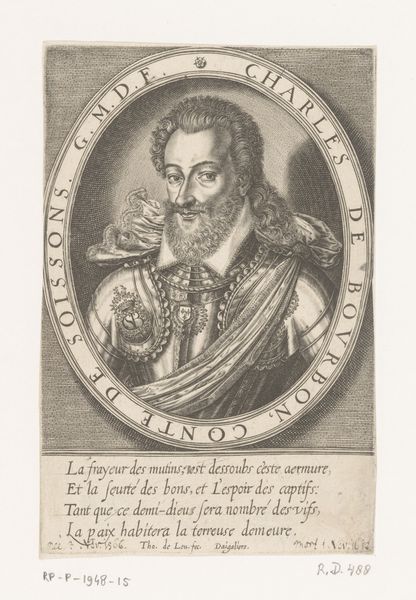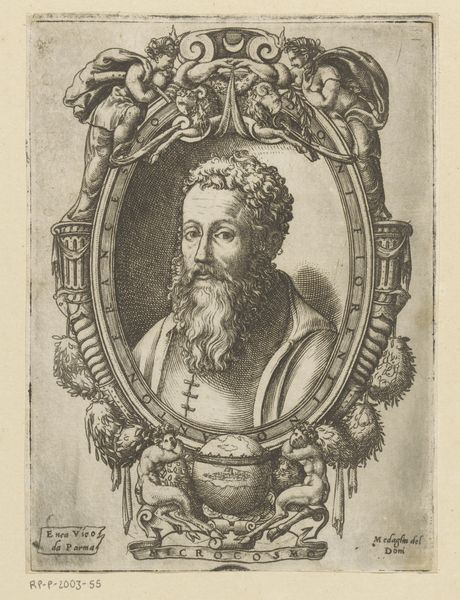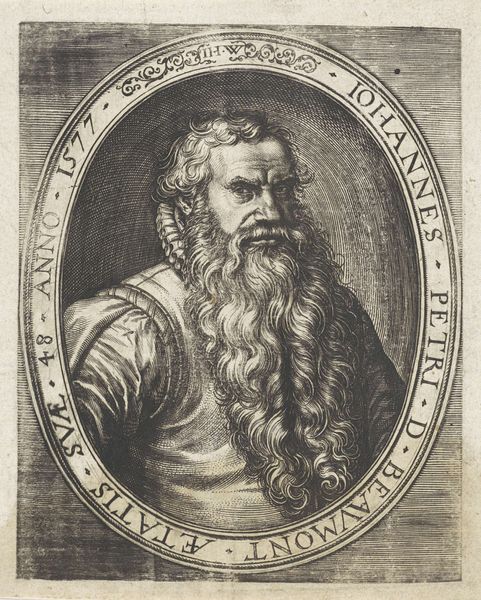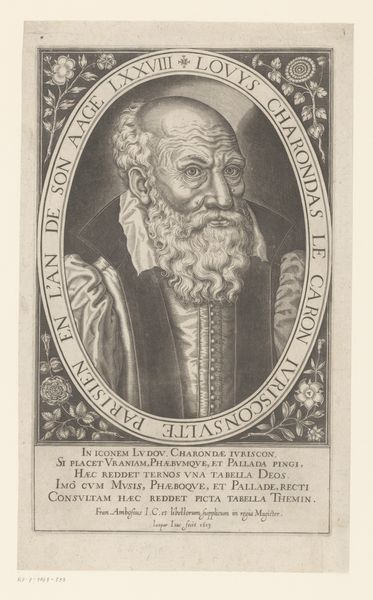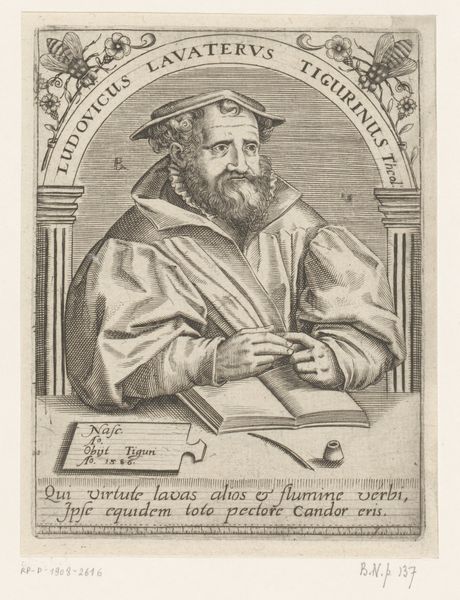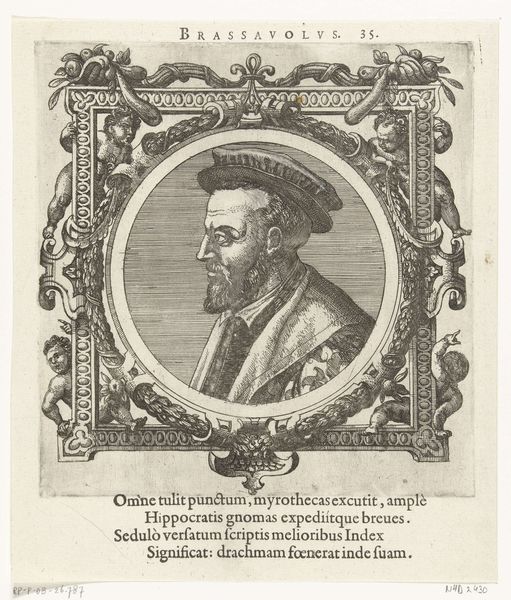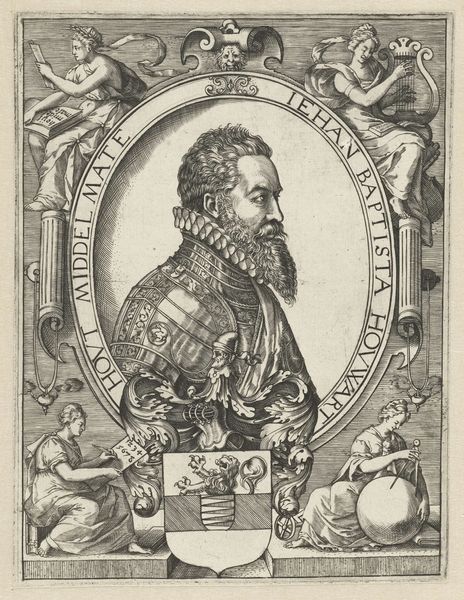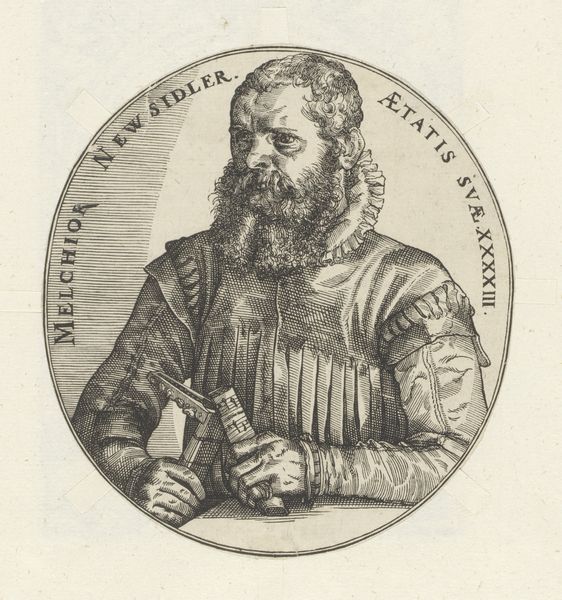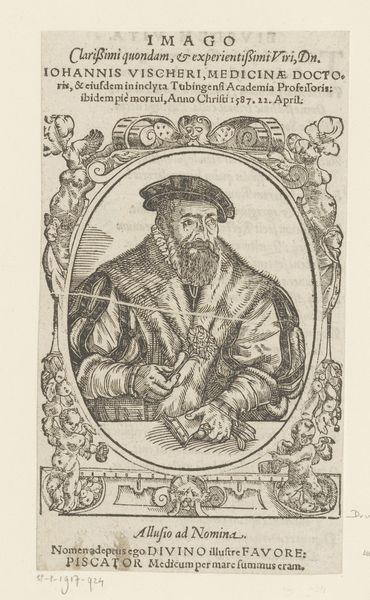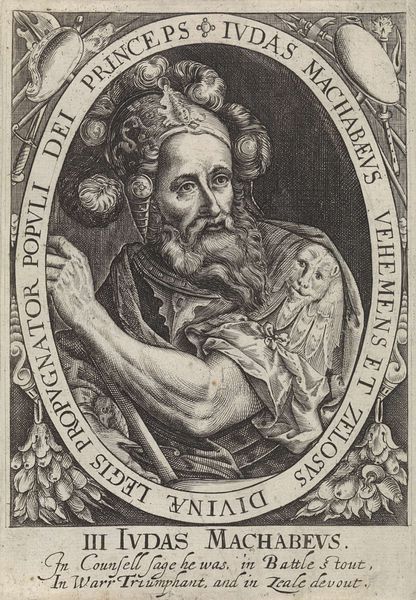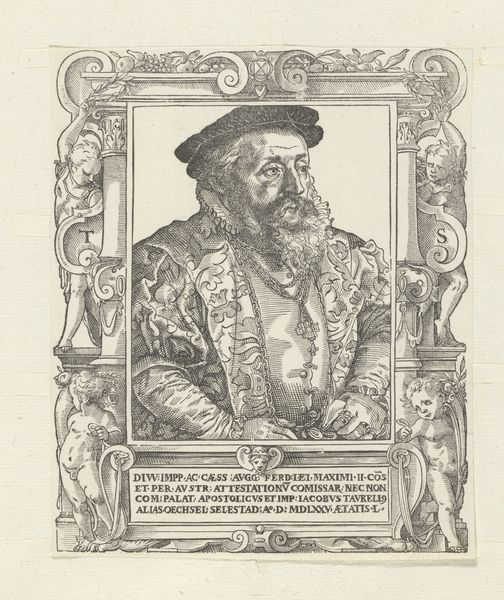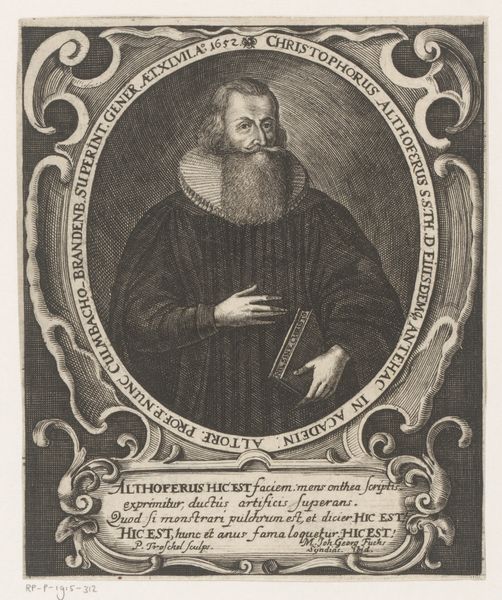
engraving
#
portrait
#
old engraving style
#
caricature
#
figuration
#
form
#
11_renaissance
#
line
#
history-painting
#
northern-renaissance
#
academic-art
#
engraving
Dimensions: height 157 mm, width 115 mm
Copyright: Rijks Museum: Open Domain
Curator: This portrait presents Leonhard Thurneisser at the age of 48. The engraving dates to 1578 and was created by Franz Friedrich. Editor: The density of detail achieved through the engraving is really striking. The subject’s expression has a shrewd intensity. What's notable is the obvious labor involved; creating these finely etched lines across the plate would be intensive, physically demanding work. Curator: Exactly. Engraving allowed for widespread dissemination of imagery and knowledge during this time, creating visual representations for the burgeoning literate public. Notice the symbolic tools included, particularly the globe and dividers. Editor: Right, and I think that contributes to understanding Thurneisser as a figure. It's less a simple representation of him and more a statement on his status as a learned individual, a cartographer, maybe an astrologer or astronomer given those objects. Who was he? What were his social networks? Curator: He was a fascinating figure – a Renaissance polymath involved in medicine, astrology, and alchemy. His life was closely tied to courtly politics and patronage. These were the means of material support in order to be successful during this historical moment. The engraving itself becomes a vehicle for advertising his expertise and legitimizing his practice. Editor: And the printmaking technology enables Friedrich to cast Thurneisser as both scholar and something of an entrepreneur. I also appreciate how these prints, meant for circulation, participated in constructing a public persona. Curator: Absolutely. Examining the materials – the paper, the ink – also reminds us of the economic networks necessary to produce and distribute images like these. Editor: Yes, it pulls the image down from an airy intellectual sphere and back to Earth— the labor involved and its material circulation. It offers a new dimension of understanding to how early modern reputations were crafted.
Comments
No comments
Be the first to comment and join the conversation on the ultimate creative platform.
